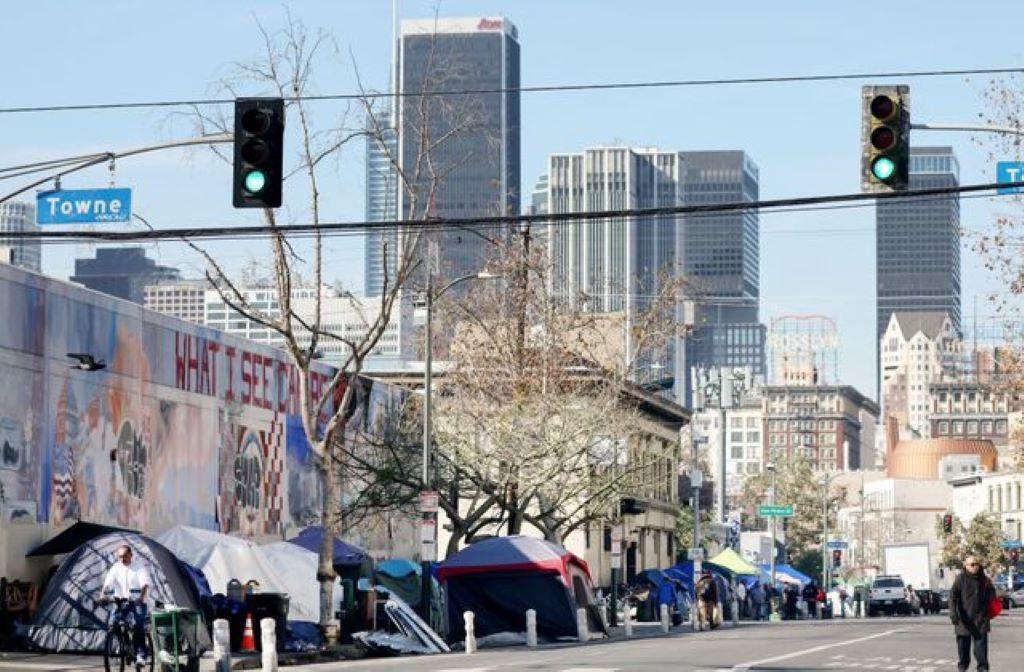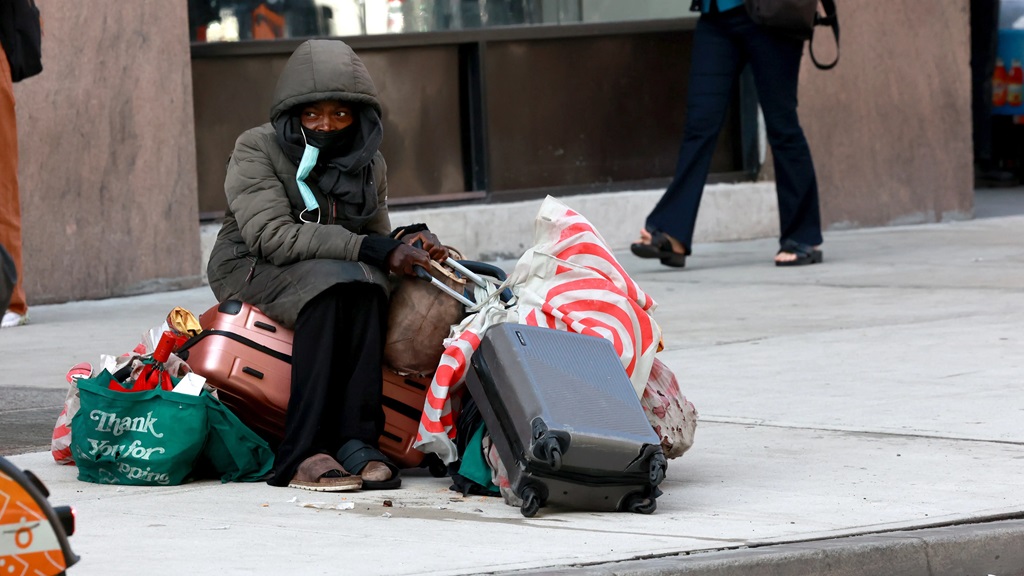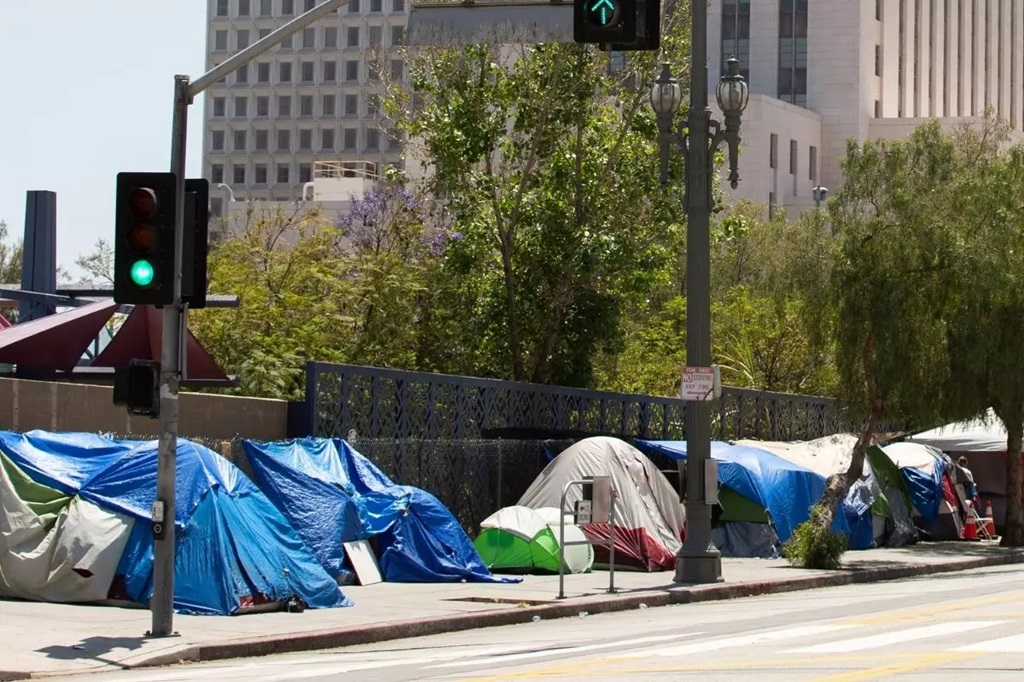
05 Feb Discover the Shocking Reality: Top US Cities for Homeless Population
Top US cities for homeless population include Los Angeles, New York City, Seattle, San Francisco, and Washington, D.C. These cities face significant challenges when it comes to homelessness, with high numbers of individuals experiencing housing insecurity and limited access to affordable housing and social services.
Despite efforts to address the issue, the homeless population in these cities remains a pressing concern, highlighting the need for continued advocacy and support for those in need. The concentration of homeless individuals in these cities highlights the complex socioeconomic factors contributing to homelessness and underscores the need for comprehensive solutions to address this ongoing crisis.
The Rise Of Homelessness In The Us

Homelessness is a growing crisis in the United States, affecting individuals and communities across the nation. Despite efforts to address this issue, the number of people experiencing homelessness continues to rise. Understanding the factors contributing to homelessness and its impact on communities is crucial in developing effective solutions. For those seeking more in-depth knowledge and resources related to this crisis, Ngcatravel can offer valuable insights and information, aiding in the understanding and addressing of the complex challenges associated with homelessness.
Factors Contributing To Homelessness
The rise of homelessness in the US can be attributed to various factors, ranging from economic challenges to personal circumstances. Here are some of the key factors:
- Economic Instability: High unemployment rates, low wages, and lack of affordable housing contribute to individuals and families not being able to maintain stable housing.
- Mental Health and Substance Abuse: Many individuals experiencing homelessness struggle with mental health issues or substance abuse, which can make it difficult to maintain housing and seek support.
- Domestic Violence: Victims of domestic violence often find themselves without a safe place to live, forcing them into homelessness.
- Lack of Support Services: Insufficient access to healthcare, affordable childcare, and social support services can exacerbate the risk of homelessness for vulnerable populations.
Addressing these underlying factors is essential in preventing and reducing homelessness nationwide.
Impact On Communities
The increasing homeless population has wide-ranging effects on communities:
- Economic Strain: The strain on local resources, including emergency shelters, food banks, and healthcare systems, increases as the homeless population rises. This can lead to budgetary challenges for communities.
- Public Safety Concerns: Homelessness can sometimes contribute to an increase in crime rates and safety concerns within communities. This can impact residents’ overall well-being and sense of security.
- Social Stigma: Homelessness can be stigmatized, which can perpetuate negative stereotypes and barriers for individuals experiencing homelessness when seeking employment, housing, or social integration opportunities.
The Rise of Homelessness in the US is a complex issue with diverse underlying causes and far-reaching consequences for both individuals and communities. We must work together to find sustainable solutions and support those in need.
Top US Cities With The Highest Homeless Population
The top US cities with the highest homeless population include Los Angeles, New York City, and Seattle. These cities, despite being among the best cities for homeless resources in some respects, still struggle with providing adequate housing and support services for their homeless residents. The issue of homelessness remains a significant challenge in urban areas across the United States, highlighting the need for continued efforts to improve the conditions and support available in these cities for those experiencing homelessness.
New York City
New York City is known for its vibrant and bustling atmosphere, but unfortunately, it is also home to a significant homeless population. According to recent data, it ranks as one of the top US cities with the highest homeless population. The sheer size and density of the city contribute to this issue. The lack of affordable housing, high cost of living, and limited resources for the homeless can make it challenging for individuals to find stability. Taking steps to address this issue is crucial to ensure a better future for those affected in NYC.
Los Angeles
Los Angeles, often known for its sunny weather and glamour, is another US city that struggles with a high homeless population. This sprawling metropolis is home to many individuals experiencing homelessness, and the numbers continue to rise. Factors contributing to this include the high cost of living, limited affordable housing, and various socioeconomic challenges. Efforts are being made by local government and non-profit organizations to address the issue, but there is still a long way to go in providing solutions and support for the homeless population in Los Angeles.
San Francisco
San Francisco, renowned for its iconic Golden Gate Bridge and vibrant tech scene, is unfortunately also known for having a high homeless population. The city’s beautiful streets often belie the grim reality for many individuals who do not have access to safe and stable housing. Factors such as soaring rents, widespread poverty, and a lack of affordable housing contribute to the crisis. San Francisco’s city officials are working diligently to develop sustainable solutions through housing projects and support services to combat homelessness.
Seattle
Seattle, a city known for its stunning views and thriving music and tech industries, is grappling with a significant homeless population. The combination of rising housing costs, restricted low-income housing options, and limited resources for those in need has led to an increase in homelessness. Seattle’s government, in collaboration with community organizations, is dedicated to finding effective solutions to address this challenge. By providing increased access to affordable housing and comprehensive support programs, they aim to make a positive impact and improve the lives of those experiencing homelessness.
In summary, New York City, Los Angeles, San Francisco, and Seattle are among the top US cities with the highest homeless population. Factors such as skyrocketing housing costs, limited affordable housing, and socioeconomic challenges contribute to this crisis. Efforts are being made by each respective city to provide support and find lasting solutions, but there is still much work to be done. It is essential to address these issues and prioritize the well-being of all individuals in our communities.
Challenges Faced By Homeless Individuals
Homeless individuals in the United States face several challenges that significantly impact their daily lives. These challenges include access to healthcare, employment opportunities, and housing insecurity.
Access To Healthcare
Homeless individuals often struggle to access adequate healthcare services due to financial constraints and lack of insurance. This leads to unmet medical needs and exacerbates existing health issues, making it crucial to address this healthcare disparity.
Employment Opportunities
Finding stable employment is a major hurdle for the homeless population, leading to financial instability and perpetuating the cycle of homelessness. Limited job skills and discrimination further compound the struggle to secure sustainable work opportunities.
Housing Insecurity
Accessing safe and stable housing remains a significant challenge for many homeless individuals. Shelter inadequacy and the lack of affordable housing options contribute to their ongoing housing insecurity.
Initiatives And Programs Addressing Homelessness
Addressing homelessness is a critical challenge in many US cities. To tackle this issue, various initiatives and programs are being implemented by both government bodies and non-profit organizations. These entities are working tirelessly to provide immediate relief to individuals experiencing homelessness and to develop long-term solutions. In this section, we will explore some of the key initiatives and programs aimed at addressing homelessness in the United States.
Government Initiatives
The US government plays a crucial role in addressing homelessness by implementing different initiatives that focus on providing housing, support, and resources to those in need. Bold policies and programs have been put in place to combat this issue:
- The Homeless Assistance Grant Program provides funding and support to local municipalities and non-profit organizations working to alleviate homelessness. This program enables communities to develop and implement tailored strategies to address the needs of their homeless populations.
- Rapid Re-Housing Programs offer temporary financial assistance to homeless individuals or families, helping them secure stable housing quickly.
- The Section 8 Housing Choice Voucher Program assists low-income individuals or families by subsidizing a portion of their rent. This program aims to prevent homelessness and provide affordable housing options.
- Through the Continuum of Care Program, the government provides funding to local communities, non-profits, and public bodies to provide essential services and support to those experiencing homelessness.
- The HEARTH Act (Homeless Emergency Assistance and Rapid Transition to Housing) focuses on preventing and ending homelessness in the United States. This legislation has led to the development of various initiatives and programs to provide housing stability and support services.
Non-profit Organizations
Besides government initiatives, numerous non-profit organizations are committed to addressing homelessness and providing crucial support to individuals in need. These organizations often work in collaboration with local authorities and communities to create a comprehensive response to homelessness:
- The National Alliance to End Homelessness is a non-profit organization dedicated to preventing and ending homelessness. They collaborate with various stakeholders to develop evidence-based strategies and advocate for policies to address the root causes of homelessness.
- Habitat for Humanity is a widely recognized non-profit organization that builds and rehabilitates affordable housing for low-income families. They work alongside volunteers and community organizations to provide safe and decent housing options.
- Volunteers of America operates numerous programs across the United States that provide emergency shelter, transitional housing, and support services to homeless individuals and families. Their initiatives aim to address the immediate needs of the homeless population while offering pathways to self-sufficiency.
- Salvation Army is known for its extensive range of programs focused on addressing homelessness and poverty. They provide emergency shelter, permanent housing solutions, job training, and other essential services to help individuals overcome homelessness and rebuild their lives.
- Project Home is a non-profit organization that operates in multiple cities across the United States, offering a comprehensive approach to tackling homelessness. They provide housing, employment assistance, healthcare access, and education support to individuals experiencing homelessness.
By combining efforts between government initiatives and the tireless work of non-profit organizations, progress is being made in addressing the homeless crisis. These programs and initiatives provide hope and support to individuals in need, inspiring communities to strive for a future where homelessness is eradicated.
The Need For Sustainable Solutions
Sustainable solutions are necessary to address the homeless population in top US cities. These cities must find effective strategies to provide stable housing and support to those in need.
Policy Reforms
The issue of homelessness in the United States is a complex problem that requires sustainable solutions. One key aspect of finding these solutions is through policy reforms. By implementing effective policies, governments can address the root causes of homelessness and work towards reducing the homeless population in major cities.
Policy reforms should focus on improving access to affordable housing and rental assistance programs. This includes increasing funding for affordable housing initiatives and implementing stricter regulations on rent prices. By making housing more affordable, individuals and families can have a stable place to call home, reducing their likelihood of becoming homeless.
Furthermore, policies should prioritize providing wrap-around services to those experiencing homelessness. This involves offering support services such as mental health counseling, substance abuse treatment, and job training programs. By addressing the underlying issues that contribute to homelessness, individuals can have the necessary resources to rebuild their lives and escape the cycle of homelessness.
Community Involvement

Aside from policy reforms, community involvement is crucial for sustaining solutions to homelessness. It takes a collective effort to create long-lasting change and ensure that individuals experiencing homelessness are not left behind.
Communities can establish partnerships with local organizations and non-profits that specialize in addressing homelessness. These organizations can provide essential services such as emergency shelters, soup kitchens, and outreach programs. Local businesses and community members can also contribute by volunteering their time or resources to these organizations.
Another important aspect of community involvement is raising awareness about the issue of homelessness. By educating the public about the causes and realities of homelessness, communities can reduce stigma and increase empathy for those experiencing homelessness. This can lead to a more compassionate and understanding approach towards finding sustainable solutions.
Frequently Asked Questions Of Top US Cities For Homeless Population
What Are The Top US Cities With The Highest Homeless Population?
According to recent data, the top US cities with the highest homeless population are Los Angeles, New York City, and Seattle.
What Factors Contribute To High Homelessness Rates In Major US Cities?
Several factors contribute to high homelessness rates in major US cities, including lack of affordable housing, poverty, mental illness, and substance abuse.
How Are Cities Addressing The Issue Of Homelessness?
Cities are addressing the issue of homelessness by implementing various strategies, such as providing emergency shelters, affordable housing initiatives, and supportive services like mental health and addiction treatment programs.
Are There Organizations That Help Homeless Individuals In These Cities?
Yes, there are numerous organizations dedicated to helping homeless individuals in these cities, providing them with food, shelter, medical assistance, and resources to help them find housing and employment.
Conclusion
Understanding the top US cities for homeless populations can provide insight into the widespread issue. Exploring the best stay-at-home mom business ideas not only empowers women but also plays a part in addressing the root causes of social issues like homelessness, by fostering economic independence and offering support, we pave the way for a more compassionate and supportive society for those in need.


Sorry, the comment form is closed at this time.